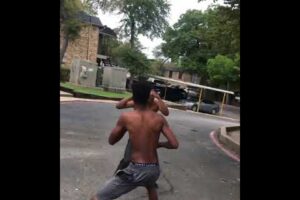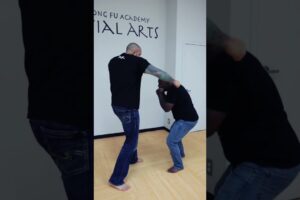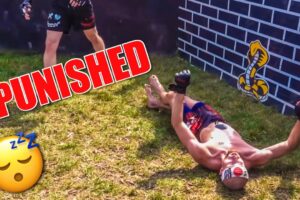
Filipino Dirty Boxing—Panantukan—isn’t just about punches. It’s about survival.
In this video, Tuhon Apolo Ladra reveals the ruthless tactics behind Panantukan: from vicious elbows and limb destructions to unexpected street techniques like throwing sand in your opponent’s eyes or blinding them with chili powder. This is the raw, real-world side of fighting—where anything goes and the only rule is to win.
source







Training in FMA and Silat teaches you everybody is always armed. Even when my guys grapple we have hidden training knives . I'm old and slow, I'll likely get taken down. But I have 3-4 blades on me at all times. Not interested in "fighting fair" , just interested in going home that night .
I could listen to Apollo Ladra forever. The Part about the Instructor and learning together. What a great guy.
Kali, Eskrima, Panuntukan, 52 block, techniques were similar
My uncle taught me that in sikaran arnis what ever we grab on the street is a bin or a pen can be used as a weapon reason why I miss doing arnis
Dirty fighting or sports fighting, you need to drill the techniques to become second nature and then stress test….
No such thing as dirty, when your life is threatened
Philippines are very dirty fighting always
❤
My mans Jonny Bones 😂
Sparring and fighting are very different, but both are valuable.
I remember my Filipino Kali teacher, she taught that the way to survive a lethal threat was to get yourself to an advantage in the shortest time possible, using whatever technique and whatever object you had. (Her husband was killed in a knife fight in the Philippines)
I knew Apolo when I was a kid. East coast TKD. He hasn’t aged a day. MF lol
The way I understand it, apparently, the term "Panantukan" is a hybrid word that probably originated in the west stemming from the mispronunciation and mixing up of the Visayan word "pangamot"(hand fighting) and the Tagalog word "suntukan"(fist fighting). Allegedly, some foreign students who didn't speak the Filipino languages, but who studied under two different Filipino masters, a Bisaya and a Tagalog mixed up their articles hence they ended up assuming the prefix "pan" applies to both language grammar rules. And that fallacy was perpetuated to the next generation of western students down the years. No idea if this is true, but it kinda makes sense to me, as no Filipino, Tagalog or Bisaya, would ever recognize "panantukan" as a real word in their local language or native dialects.
Great lesson that was.God bless you.
Pugay po
Yup, he's right. The root-word of Panuntúkan is ᜐᜓᜈ᜔ᜆᜓᜃ᜔ (" suntòk "; "soon-TOK"; both/either n. 「punch/box」 or v. 「to punch/box」).
It seems to have been derived the same way as another name for (armed) F.M.A., Pananandáta from ᜐᜈ᜔ᜇᜆ (" sandáta "; "san-DAH-tah"; n. 「weapon」). Start with ᜉ "pa" for the 1st syllable, replace the "s-" to "n-"in the root-word's 1st syllable, repeat the new 1st syllable, and (in the case " Panuntúkan ") add "-an" at the end to declare this new word a noun. (I'm guessing, "being armed" or "using weapons"?)
Great lession. These techniques are very useful especially in street fighting situations where there are no rules. Salamat… for a great video…!!! 😉😉😉
Awesome breakdown 💯 💪 🥋
🤣🤣🤣 He took my blade. 😂😂
I just moved to the Philippines from Australia last March never going back. I went to Apolo's seminar last July, was awesome he is a first class instructor, always concerned about everyone else, extremely well organised, typical Filipino very humble, grateful and kind, but can kill you in the blink of an eye. Hoping to get to the next seminar.
2:05 14:20 14:50 15:11 17:10
Great teaching!
I’m sorry that life has historically been so harsh in the Philippines that the people had to learn all this in order to maximize survival. Lord, please never let me find physical combat with a Filipino.